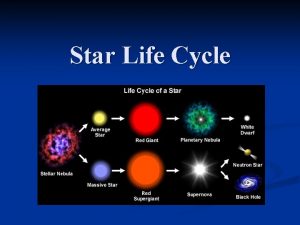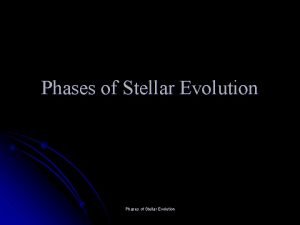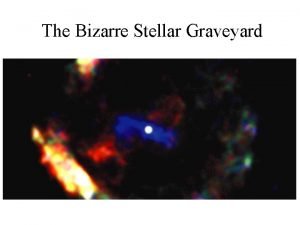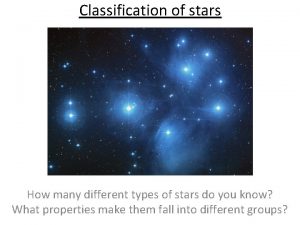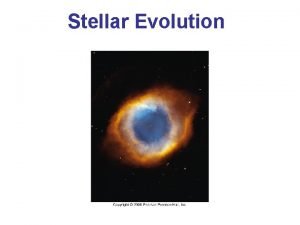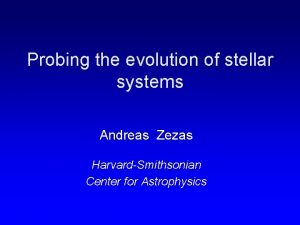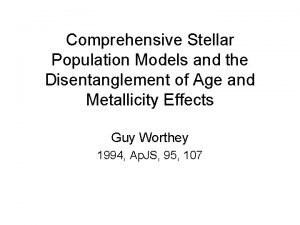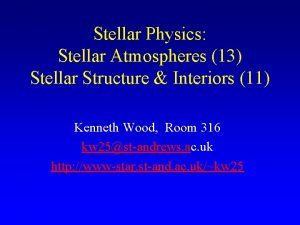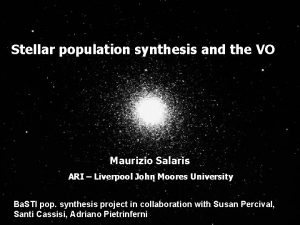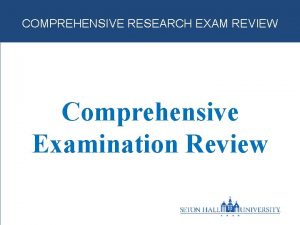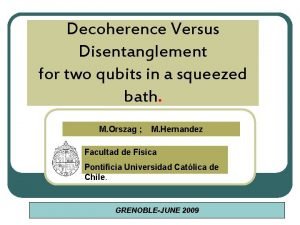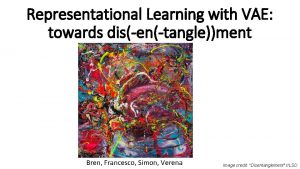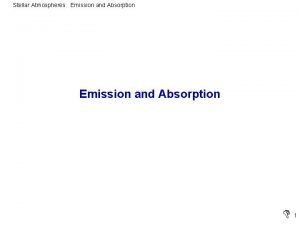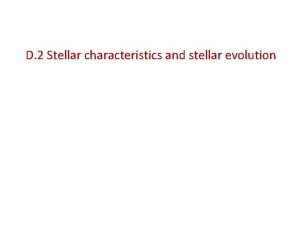Comprehensive Stellar Population Models and the Disentanglement of


















- Slides: 18

Comprehensive Stellar Population Models and the Disentanglement of Age and Metallicity Effects Guy Worthey 1994, Ap. JS, 95, 107

Purpose • Construct models for intermediate and old stellar populations. – Models output the following: • • Broadband magnitudes Spectral energy distributions Surface brightness fluctuation magnitudes 21 absorption feature indices • Draw conclusions regarding abundances and other quantities. • Separate age and metallicity effects.

Background • Evolutionary population models build galaxies using knowledge of stellar evolution and physical input parameters. – These models are good in that there are few adjustable parameters. – Bad in that they rely on theory. – Often used to find out what galaxies looked like in the past. – This article introduces the use of a comprehensive array of absorption features.

Population Models • Use stellar evolutionary isochrones from two different sources to cover different ages, masses, and metallicities. – Vanden. Berg and collaborators and Green et al. 1987. • Conclude that effects due to age and metallicity are more similar for metal-rich stars.

• Two sets of isochrones show that age and metallicity effects resemble each other more at higher metallicities.

• Parcels of stars at different locations along the isochrones are summed up to obtain the total flux (as a function of wavelength). • Integrated flux = – n is the number of stars and L is the luminosity of the parcel. – Flux Fλ is normalized to 1 solar luminosity. – Index i represents the bins in the isochrone. • This also gives colors and absorption features.

Comparison to observed clusters • Comparison to observed luminosity functions. – Horizontal branch is 0. 5 mag fainter than predicted by model. – Otherwise good agreement.

• The isochrones are compared to colormagnitude diagrams. – Isochrones deviate near the tip of observed giant branches. • Solid curve: 15 Gyr model isochrones. • Dotted: observed populations (Frogel, Persson, & Cohen, 1981). • Isochrones are matched with [Fe/H] to clusters. – Globular and open clusters are generally in good agreement with model sequences.

Model output • • Initial mass function Output tables Initial mass at RGB tip Luminosity Influence of model parameters Spectral energy distributions Age and metallicity sensitivity

Initial mass function • Power law (Salpeter 1955). – N is number of stars, C is a constant, M is the stellar mass, and x is a parameter. – C is defined such that total mass Mtot = 106 solar masses. • Results can be scaled for more or less massive systems. – Limits are 0. 1 and 2 solar masses. • 2 since young stars are not included here.

Output tables • The models output the following quantities for different ages and metallicities: – – – – – Initial mass at the tip of the RGB Bolometric luminosity V-band bolometric correction Absolute magnitudes M/L ratios Broad-band colors Absorption feature indices D(4000) index Fluctuation magnitudes Fluctuation colors

Initial mass at RGB tip • Important for determining number of post. RGB stars. • The different symbols and their sizes represent different values of [Fe/H] and age hereafter.

Luminosity • Expressed in M/L for different passbands. • Trend of M/L with metallicity reverses near I-band (see following figure). • M/LI has weakest metallicity dependence, and also depends more weakly on age than traditionally used M/LB. Ø Should be used for studies in M/L and standard candles. • J-band is nearly as good in this respect.

• M/L as a function of age for four different passbands.

Influence of model parameters • Metallicity and age produce the greatest variations among old populations. • Other variables such as IMF slope x have an effect of the same magnitude as model uncertainties. • Some index-index diagrams are highly degenerate and ambiguous.

Spectral energy distributions • “Modeling of metal rich populations at wavelengths redder than V requires careful modeling of Mgiant light. ”

Age and metallicity sensitivity • Fe 4668, Fe 5015, Fe 5709, and Fe 5782 are good metallicity indicators. – 2 to 3 times better than commonly used Mg 2 • Hβ and G 4300 are not sensitive to metallicity and are good age indicators. • In the future, higher order Balmer lines might be used. – Less affected by emission than Hβ – Less diluted by light from giants • Broad-band colors are not useful in separating age and metallicity effects.

• If symbols are separated in a gridlike fashion, an age indicator has been found. – Otherwise, there is degeneracy and it will be hard to separate age and metallicity effects.
 What is the difference between models & semi modals?
What is the difference between models & semi modals? Chapter 4 population ecology answer key
Chapter 4 population ecology answer key Section 1 population dynamics answer key
Section 1 population dynamics answer key Population ecology section 1 population dynamics
Population ecology section 1 population dynamics Chapter 4 population dynamics study guide answers
Chapter 4 population dynamics study guide answers Atmospheric heaven
Atmospheric heaven Astronomy
Astronomy Stellar evolution diagram
Stellar evolution diagram Zero age main sequence
Zero age main sequence Stellar motion matlab
Stellar motion matlab Virgo stellar stream
Virgo stellar stream Stellar graveyard
Stellar graveyard Stellar evolution flowchart
Stellar evolution flowchart Stellar hosting iptv
Stellar hosting iptv Stellar assessment
Stellar assessment Stellar saga
Stellar saga What is stellar parallax?
What is stellar parallax? Stellar evolution
Stellar evolution Stellar
Stellar







